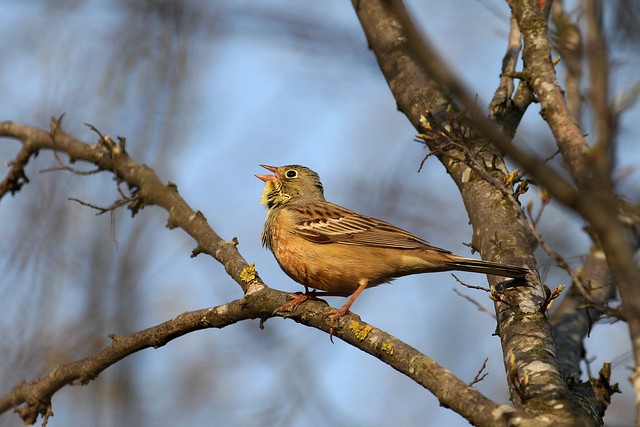No less than 9 000 bird species inhabit the planet. The common ancestor of all birds is the Archaeopteryx, which appeared in the Jurassic 150 million years ago. This fossil, found in Bavaria, has teeth, claws and a lizard tale. According to the experts, the few feathers it had were used for soaring. Birds haven’t stop evolving ever since.
The common feature to all birds is their capacity to fly. This is the most energy-consuming way of motion. Due to the fact that energy loss is inversely proportional to size, the smallest birds are the ones that need more energy and therefore the ones that eat the most.
Birds have a very efficient respiration system. They have organs called “air sacs” that allow them to keep their little lungs full with air at any time, constantly extracting oxygen. In mammals, the lungs fill with air and empty with the movements of inhalation and exhalation, whereas birds inhale air by the rear air sacs. From there, the air goes to the lungs, and then, to the front air sacs, from where it is exhaled. This way, birds continuously keep the blood oxygenation process. It allows them to make the great effort of flying and, in some species like cranes, to reach great heights where the air is less rich in oxygen.
- Bird Respiration
The maximum weight for a bird to be able to fly is about 17 kg, which is the case of some swans and bustards. Birds have lightened their weight by reducing and fusing their bones, muscles and ligaments, but they weren’t able to reduce weight in the sternum, the breastbone and the flight muscles. Bones are very light due to the inner presence of cavities that communicate with the air sacs. In order to keep lightening weight, the teeth and the mastication musculature were lost, so granivorous species developed a gizzard in order to grind. They also lack a urinary system, and the size of the gonads is reduced to the minimum.
The function of the egg is to prevent them from carrying the young. Egg-lying time is usually in the morning, so the female is light-weighed for the rest of the day. Bird reproduction is conditioned by temperature and the hours of light. What experts call “photoperiod” regulates hormone production, gonad development and nuptial plumage appearance. In the tropics without a dry season, birds breed during the whole year, whereas in Mediterranean latitudes reproduction starts in March. The hatching of the chicks should coincide with the maximum availability of food in order to support the offspring. For example, the blackbird, which feeds on earthworms to a large extent, lays the eggs at the beginning of spring, while the Eleonora’s Falcon postpones the lying until middle summer, in order to coincide with the autumn migration of small birds to Africa.
The most cold-sensitive birds, like insectivorous birds, that have no food during winter, and the water birds, whose habitat gets frozen, have solved this problem by migrating every year from the breeding area to the rest area (post-nuptial migration) and vice versa (prenuptial migration).

Ortolan Bunting (Emberiza hortulana) | Author: Photo Nature · Creative Commons: Attribution 2.0 Generic
As we have seen, birds are a genuine engineering wonder. Their whole body is adapted to flying and achieving feats: for instance, the Ortolan Bunting flies more than 8 000 km in its annual migration between Europe and Africa with its little 25-gram body.











